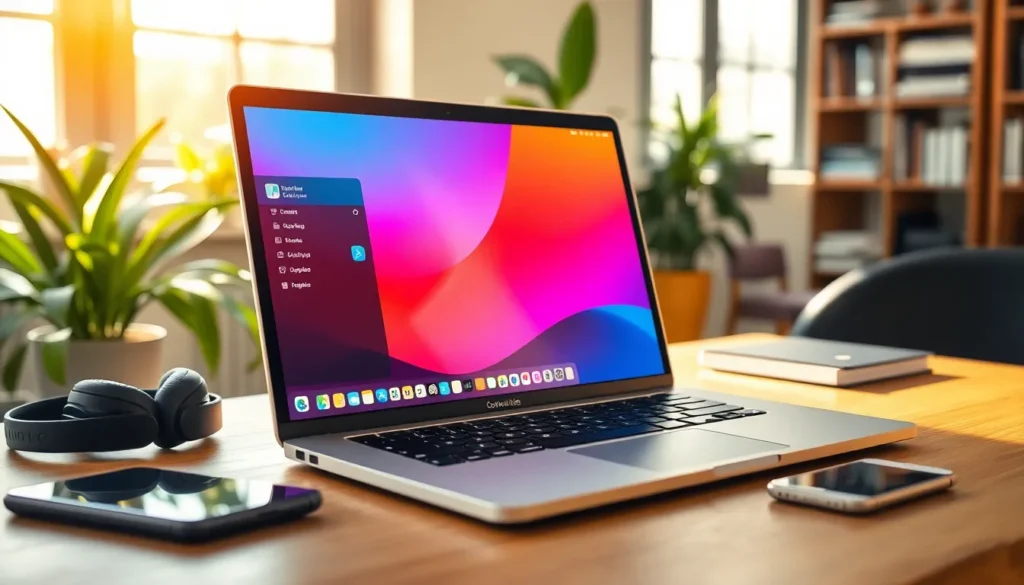Table of Contents
ToggleBuying a car can feel like a game of chess—strategic moves are essential to avoid being checkmated by your budget. One of the first pieces on the board is the down payment. It’s that upfront cash that helps reduce the size of your loan and, let’s face it, makes you feel like a financial wizard. But how does it all work?
Think of the down payment as your ticket to the car-buying party. The more you put down, the better the deal you can snag. It can lower your monthly payments and even save you from the dreaded interest monster lurking in the shadows. So buckle up and get ready to navigate the ins and outs of down payments, because understanding this key concept can steer you toward a smoother ride on the road to car ownership.
Understanding Down Payments
A down payment plays a crucial role in the car buying process. This upfront payment impacts financing terms and overall budget significantly.
Definition of Down Payment
A down payment refers to the initial amount paid when purchasing a car, serving as a portion of the total purchase price. This payment lowers the principal balance on a car loan. Typically expressed as a percentage, common down payments range from 10% to 20% of the vehicle’s total cost. For instance, on a $30,000 car, a 20% down payment equals $6,000. Making a down payment signifies a buyer’s commitment, enhancing the likelihood of loan approval.
Importance of a Down Payment
A down payment influences various aspects of the car buying experience. Higher down payments lead to lower monthly payments and reduced overall loan amounts. For example, a $5,000 down payment on a $25,000 vehicle cuts the financed amount to $20,000, minimizing interest costs over time. This upfront investment also improves buyers’ equity in the car from the start. Being financially prepared with a down payment increases negotiating power, often resulting in better financing offers.
How Does Down Payment Work for a Car?

A down payment is crucial when purchasing a car, influencing financing options and overall affordability. Buyers often focus on how much to pay upfront.
Determining the Amount Needed
The recommended down payment typically ranges from 10% to 20% of the vehicle’s price. Calculating this amount helps buyers set a budget. For example, a $30,000 car would require a down payment between $3,000 and $6,000. Evaluating personal finances assists in determining what’s manageable. Additional factors include the car’s make, model, and financing terms. Adjusting the percentage impacts loan approval chances. Lenders appreciate larger down payments as they reduce risk.
Impact on Monthly Payments
A larger down payment directly reduces the financed amount, leading to lower monthly payments. If a buyer puts down $5,000 on a $30,000 car, the financed amount drops to $25,000. This reduction results in less interest paid over the loan’s duration. Consequently, buyers gain financial flexibility each month. Monthly payment calculations depend on the loan term and interest rate. As down payments increase, affordability improves, making it easier for buyers to stay within their budget. Higher initial payments create greater equity in the vehicle, which positively affects resale values.
Benefits of Making a Larger Down Payment
A larger down payment provides several advantages in the car-buying process, enhancing both affordability and financial stability.
Lower Interest Rates
Lenders often reward buyers for higher down payments with lower interest rates. A substantial upfront payment demonstrates financial responsibility and lowers the perceived risk for lenders. This reduced risk can translate into more favorable loan terms. For example, borrowers paying 20% or more may receive interest rates 1% to 2% lower compared to those making smaller down payments. Lower interest rates decrease the overall cost of financing, making monthly payments more manageable and saving money over the loan’s duration.
Reduced Loan Amount
Making a larger down payment leads directly to a reduced loan amount. By paying more upfront, buyers decrease the total financed amount, resulting in smaller monthly payments. It’s straightforward: a $30,000 vehicle financed with a $6,000 down payment means borrowing only $24,000. This lower principal balance also reduces interest accrued over time, enhancing repayment flexibility. Additionally, lower monthly payments free up cash for other expenses, aligning more comfortably with overall budgets. Higher equity from the start strengthens the financial position of buyers, further solidifying the benefits of a substantial down payment.
Common Misconceptions About Down Payments
Many misconceptions exist regarding down payments when purchasing a car. Understanding these can help buyers make informed decisions.
No Down Payment Financing
Some buyers believe financing options without a down payment offer the same benefits as traditional loans. Such options usually come with higher interest rates due to increased risk for lenders. So, while it might seem convenient to avoid an upfront payment, it often leads to paying thousands more over time. Even with zero down payment offers, the buyer faces higher monthly payments and potentially extended loan terms. Buyers should consider that most lenders prefer a down payment, even a small one, as it signals commitment and financial responsibility.
The Myth of Trade-Ins
Another common myth is that trade-ins serve as a down payment. This assumption can mislead buyers regarding the vehicle’s true value. Trade-in offers often don’t cover the full amount expected. When negotiating, buyers should remember that the trade-in value gets deducted from the purchase price only after negotiations are settled. Moreover, relying entirely on a trade-in to cover a down payment may not always result in immediate financial benefits. Buyers can maximize their budget with a combination of trade-in equity and a cash down payment.
Understanding how down payments work is crucial for anyone looking to buy a car. A well-planned down payment not only lowers the overall loan amount but also enhances financial flexibility. By committing to a larger upfront payment buyers can secure better financing terms and lower interest rates. This strategic approach not only eases monthly payments but also builds equity in the vehicle from the outset.
Ultimately making an informed decision about the down payment can lead to significant savings and a more manageable car ownership experience. Buyers should carefully consider their budget and explore their options to maximize the benefits of their down payment.




